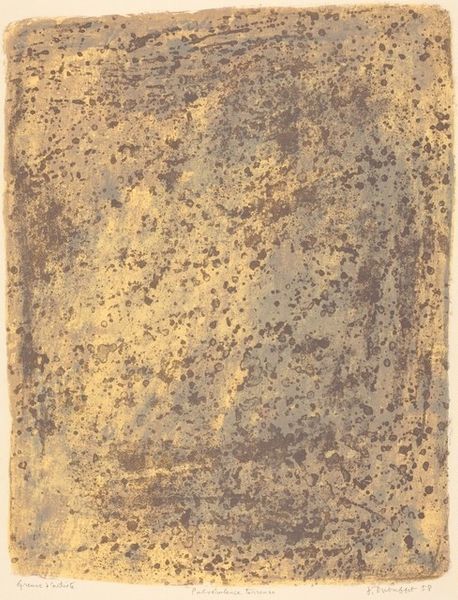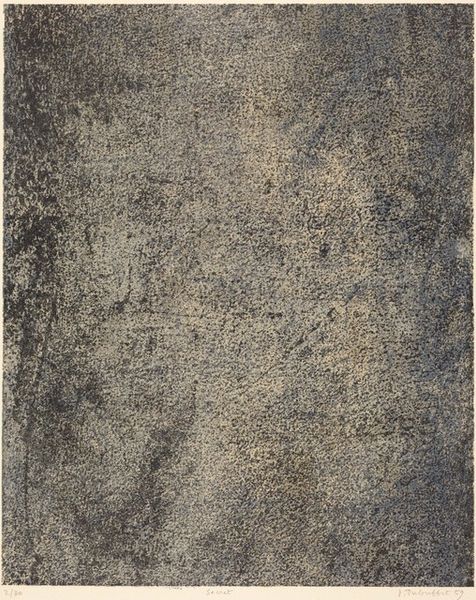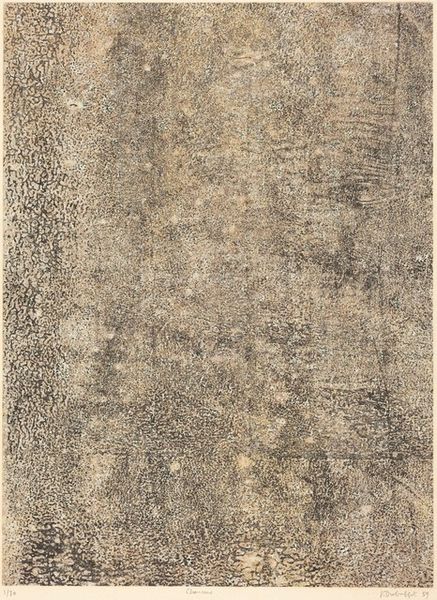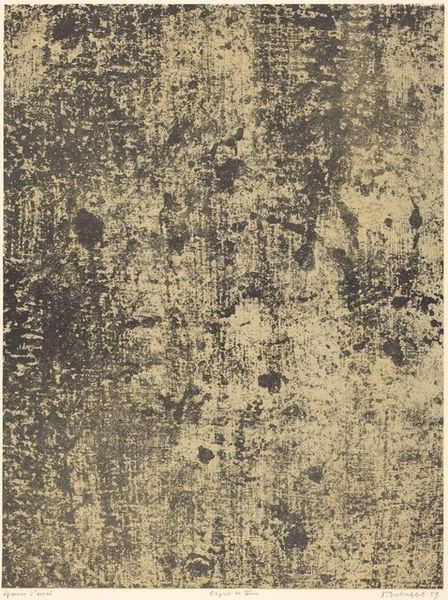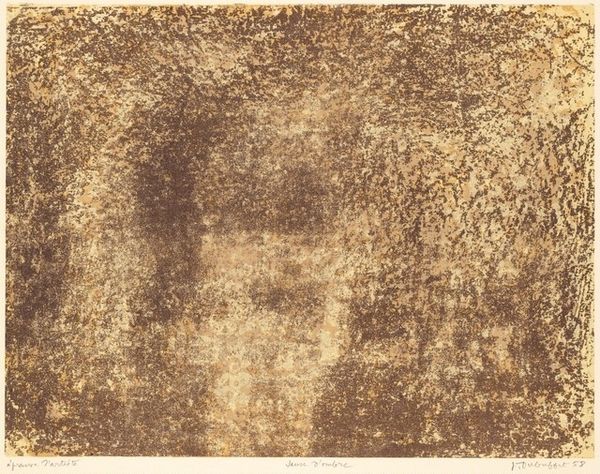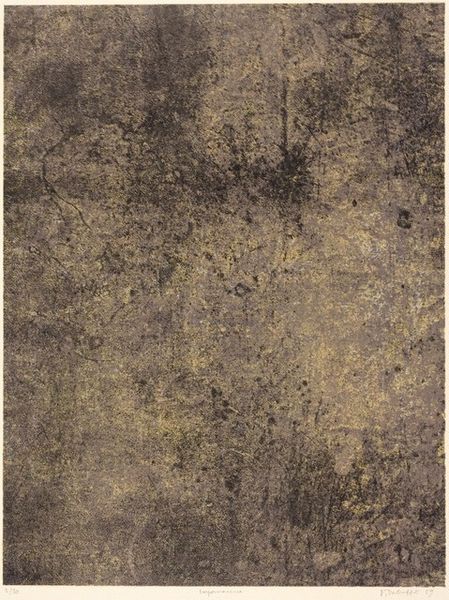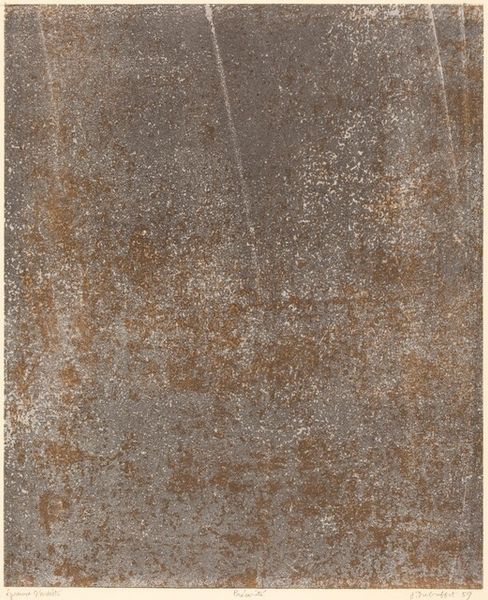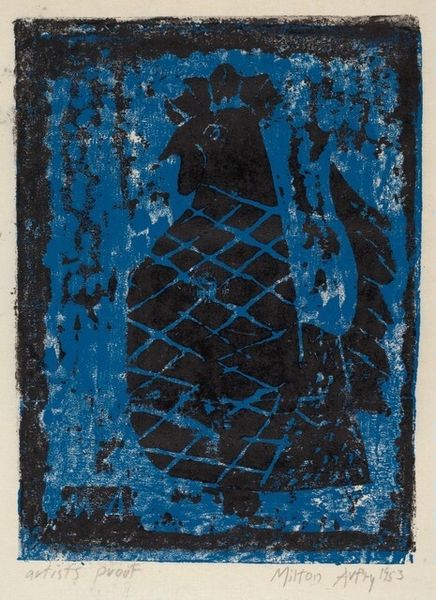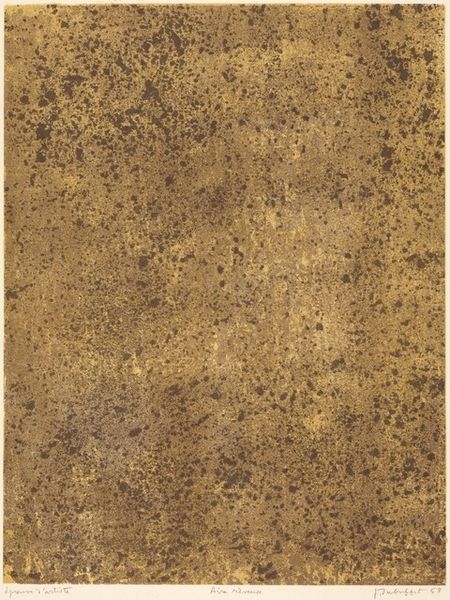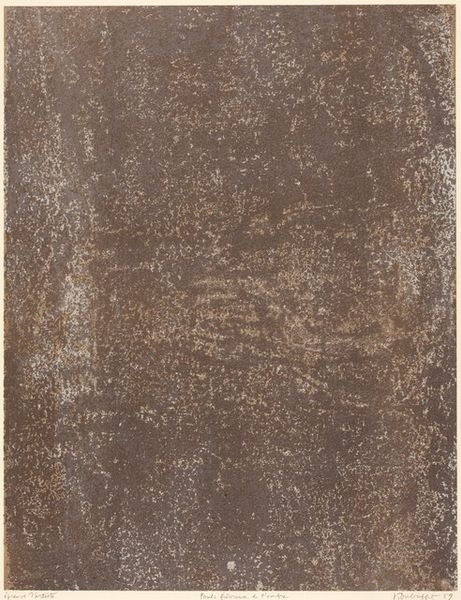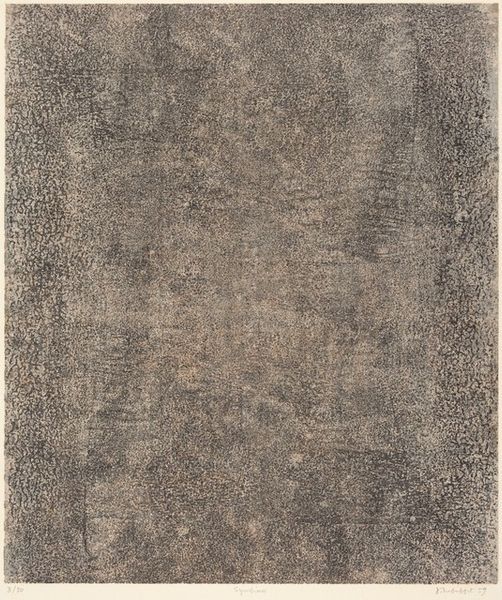
matter-painting, print, etching
#
matter-painting
# print
#
etching
#
art-informel
#
abstraction
Copyright: National Gallery of Art: CC0 1.0
Editor: Here we have Jean Dubuffet's "Profusion," an etching from 1959. It's...intense. The surface is incredibly textured, almost granular, like looking at asphalt under a microscope. It's making me a bit uneasy. What can you tell me about this piece? Curator: That sense of unease is understandable. Dubuffet was very deliberate in challenging traditional aesthetics and elevating what he called "art brut" or "raw art," work created outside the established art world. How do you think this piece, "Profusion", fits into the post-war context of art, especially regarding the prevailing artistic conventions of that time? Editor: Well, looking at the date, 1959...it feels like a direct challenge to the high-mindedness of Abstract Expressionism, or even the clean lines of mid-century design. This is actively...unpleasant, even rebellious? Curator: Precisely. Post-war Europe grappled with immense trauma. Dubuffet, along with other Art Informel artists, questioned art’s role and relevance. They sought authenticity in the discarded and overlooked. This work could be seen as a deliberate confrontation with expectations for beauty and order. Editor: So, by making something deliberately ugly or "raw", he was making a statement about the state of society? Was he alone doing it? Curator: Not at all. Think about how societal institutions, the government and the major European Museums reacted at this kind of art? Editor: Considering the rejection of traditional techniques, subject matter and artistic refinement I can see there might have been disagreement about displaying them? They're are now highly sought-after but this kind of radical rejection of everything conventional must have challenged how art was received at the time. Curator: Exactly. And Dubuffet was quite aware and intentional about creating shock and provoking this kind of debate. This artwork gives us some idea about it. Editor: It's helpful to see it as a reaction against the institutions and conventions of his time. It reframes the way I think about the mark-making, the roughness. Thank you.
Comments
No comments
Be the first to comment and join the conversation on the ultimate creative platform.
